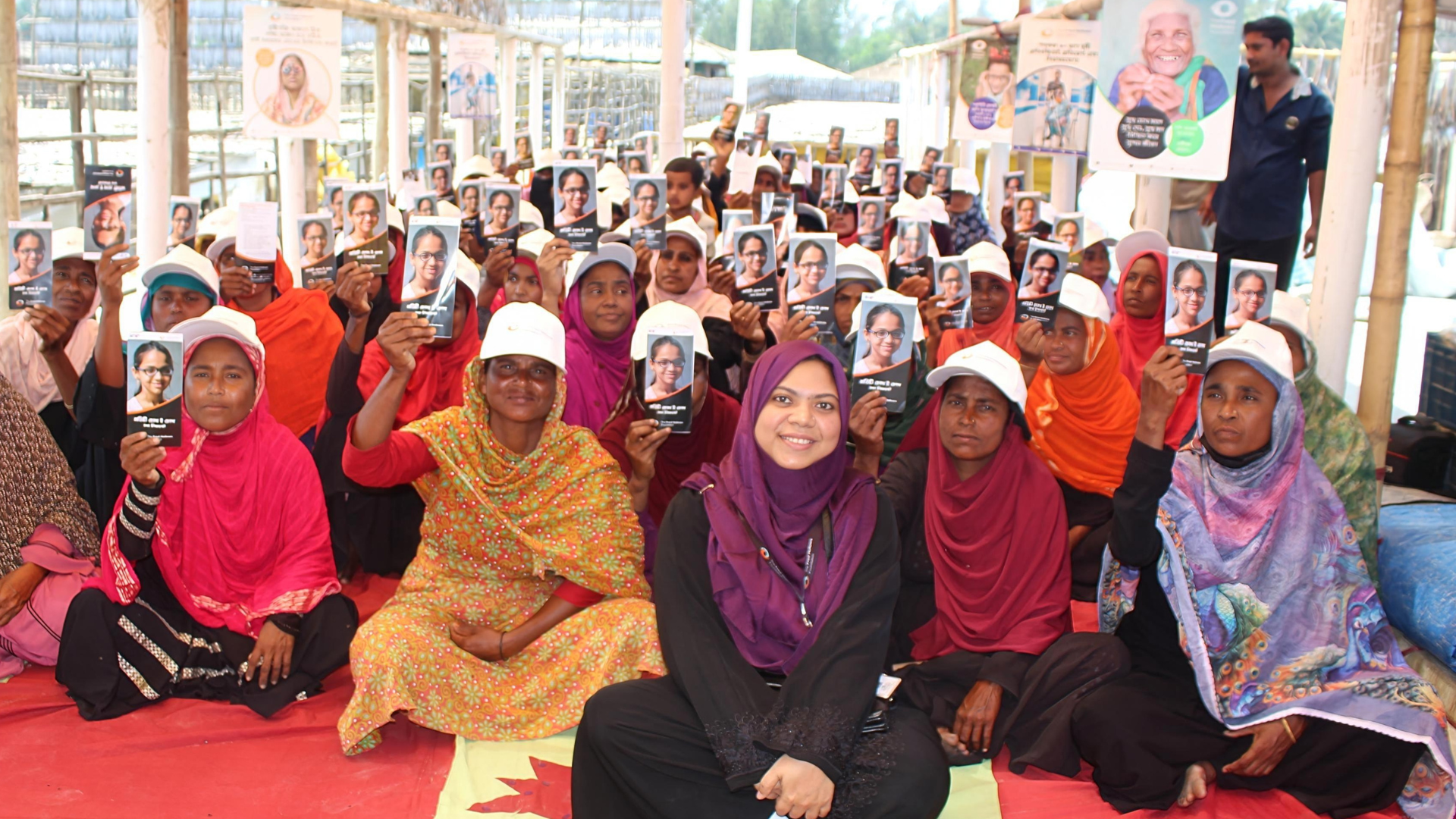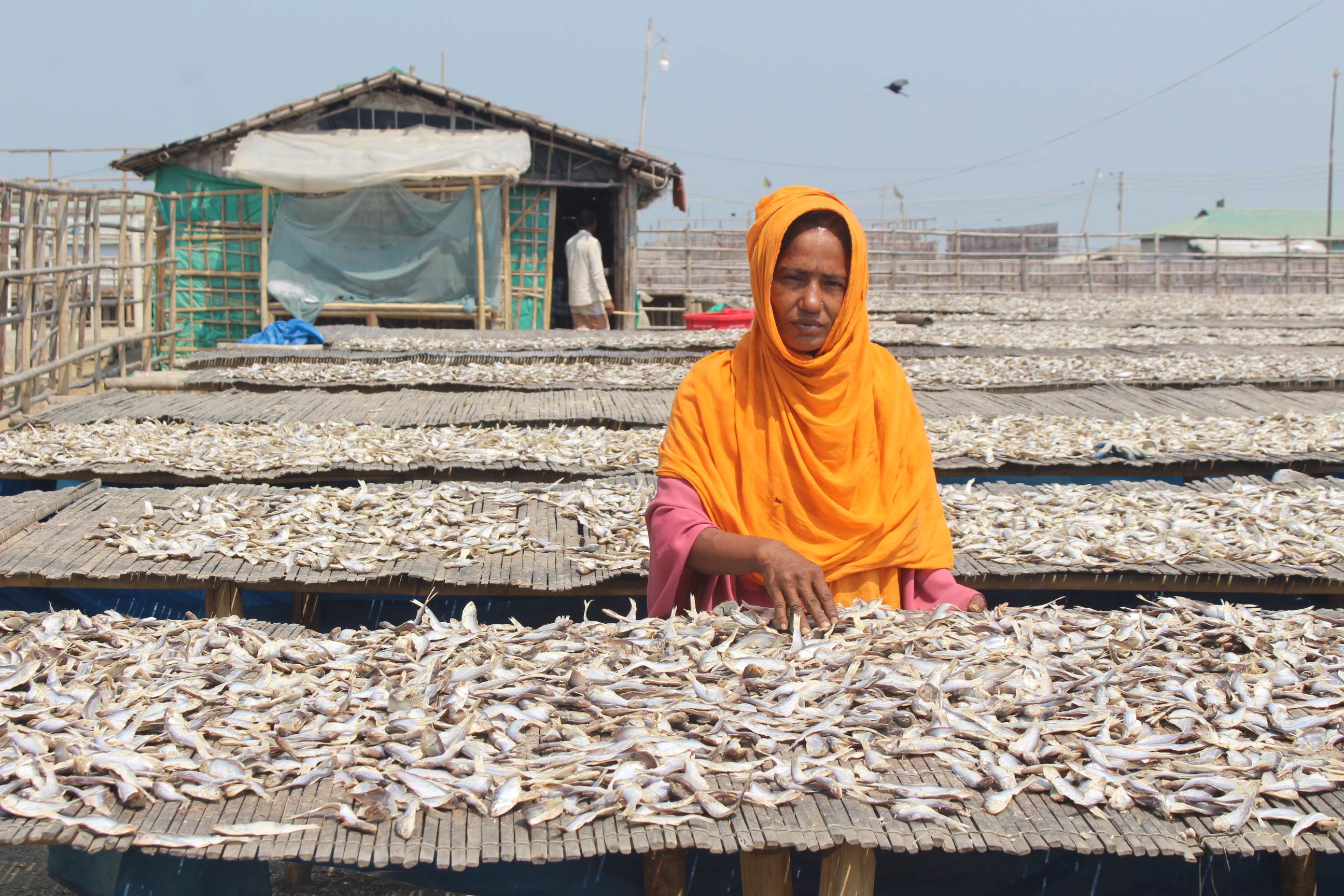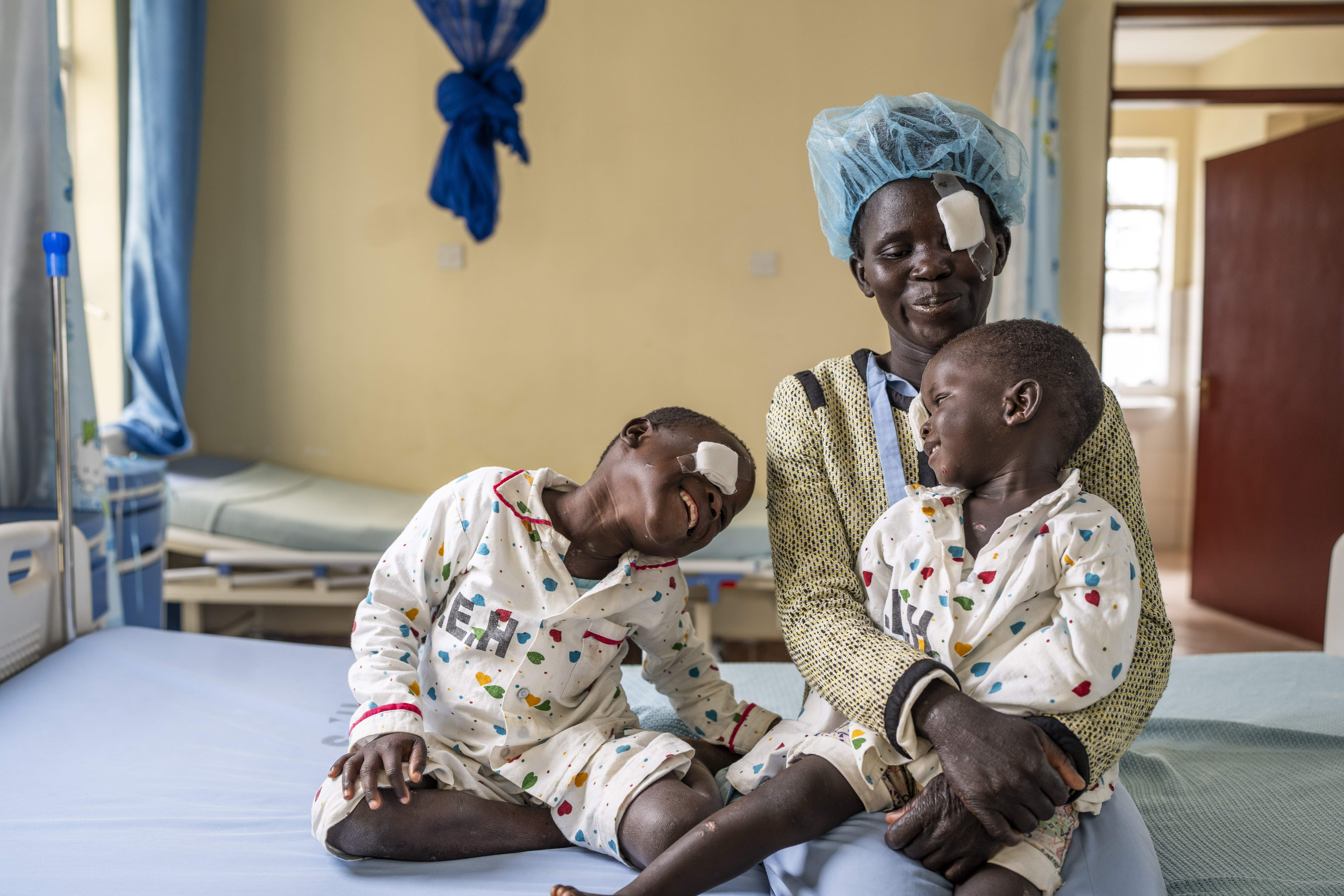5 ways restoring a mother’s sight changes everything

Across the world, blindness disproportionately affects women. In fact, more than half of the 1.1 billion people who are blind or vision-impaired are women. Yet, they face significant barriers to accessing sight-saving treatment. The reasons are complex: cultural norms, poverty, gender bias, and a lack of awareness or information all contribute.
In many countries, women are less likely to receive eye care than men. Gender bias in healthcare systems means that men are often prioritised, while women are expected to care for others—delaying their own health needs. In rural areas, the distance and cost of treatment can be a huge barrier, particularly for women who may already be struggling with financial independence. Moreover, without proper education, many women don’t know that sight-restoring surgery is safe, and some even fear the unknown.
Laila, a 35-year-old widow from Bangladesh, was one such woman. When cataracts started clouding her vision, she feared the worst. With no income and two young children to raise, blindness would have meant a lifetime of dependency.

Photo credit: Roksana Kamal
Thanks to the support of generous donors, Laila received cataract surgery through an eye screening program funded by The Fred Hollows Foundation. Today, she’s back at work, independent and confident, and able to care for her children once again.
Laila’s story is just one example of how restoring a mother’s sight can change everything. Here’s how:
1. Access to Education
Vision loss disproportionately impacts the educational opportunities of girls. Vision impairment often leads to missed school days, and girls are more likely to be affected than boys. In many communities, if a girl’s sight is not restored, her education—and with it, her future—becomes limited. However, when a mother’s sight is restored, it allows her to take a more active role in supporting her children’s education.
For girls, the benefits are substantial. If a girl has her vision corrected, she is more likely to achieve better results at school. Studies show that for each year a girl stays in school, her eventual income can rise by 10-20%. Without education, women and girls face a poverty trap: they are less able to work, more likely to suffer from ill-health, and less likely to break the cycle of poverty for their children. By ensuring women like Laila can access sight-restoring treatment, we not only change their lives but also open new opportunities for the next generation.
2. Employment and Financial Independence
Women with vision impairment are more likely to face barriers to employment compared to men. In developing countries, cultural, legal, and financial constraints further limit women’s access to secure work. Women with disabilities are less likely to have decent jobs than men with disabilities or non-disabled women, which contributes to the gender wage gap.
Untreated cataracts, which affect women disproportionately, can lead to poverty. Women with vision impairment are more likely to be poorer, have less access to assets, and need assistance. Restoring sight changes this dynamic. Studies show that within one year of restoring vision, people are able to significantly increase their participation in both paid and unpaid work, boosting household incomes and improving financial independence.
For mothers like Laila, this means a return to work, providing for her family, and regaining the dignity and sense of purpose that comes with financial autonomy.
3. Social Inclusion, Participation and Voice
Women with vision loss often face social exclusion. In many cultures, there are long-standing prejudices that marginalise women with disabilities. They are often shunned or avoided, particularly by those who fear that helping them will require financial support. This isolation limits their ability to participate in civic activities like community meetings, which weakens their voice and role in decision-making.
Restoring a mother’s sight brings her back into the fold of society. She regains the ability to take part in community meetings, advocate for her family, and participate in the decision-making processes that affect her life and those of her children. This participation isn’t just empowering for her—it also improves the social cohesion of entire communities, fostering greater inclusion and equality.
4. Health, Wellbeing and Security
The impact of vision loss goes beyond the physical. People with vision impairment often experience poor mental health, including anxiety and depression. Women with vision impairment are especially vulnerable, with studies showing they are more likely to suffer from low self-esteem and emotional instability. This worsens their mental and emotional health, reducing their ability to care for themselves and their families.
Additionally, women with vision loss are at a higher risk of intimate partner violence and sexual assault, with studies indicating they are two to four times more likely to experience these abuses compared to women without disabilities. By restoring a mother’s sight, we not only improve her physical health but also reduce the mental health risks and the danger of violence, providing her with the security and confidence she needs to thrive.
5. Breaking the Cycle of Poverty
Vision impairment often traps women in a cycle of poverty. Without sight, women are unable to work, educate their children, or fully engage in social life. This impacts the entire family unit. For instance, women who care for family members with vision impairment may find it hard to work or pursue education, leading to further financial strain.
When sight is restored, the cycle of poverty can be broken. Restored vision opens opportunities for employment, education, and better health outcomes. It allows women to support not only themselves but also their children, who will have a better chance of escaping poverty and achieving success in the future.

Photo credit: Hugh Rutherford
Restoring a mother’s sight isn’t just about improving her vision—it’s about transforming her life and the lives of everyone around her. The positive impact ripples through families and communities, creating lasting change. With your support, we can continue to provide life-changing sight-restoring surgeries to mothers like Laila, helping them regain their independence and build brighter futures for themselves and their children.
This Mother’s Day, you can help a mother like Laila see again. Please consider donating today to restore a mother’s sight and change her world. Read more about our Gender Equity work here.